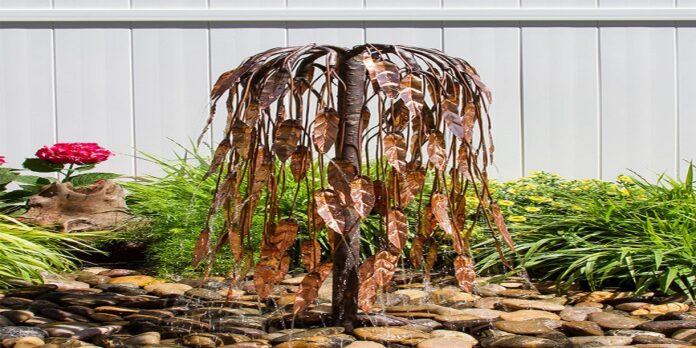Transforming your garden into a bustling haven for beneficial wildlife is not only a visually appealing endeavor but also an eco-friendly one. Imagine the melodious chirping of birds, the flutter of butterflies, and the hum of bees adding a symphony to your outdoor space. Read on below for a few things you can do to turn your flower garden into a wonderland for beneficial wildlife:
Create Diverse Habitats
Variety is the spice of life, and it shouldn’t be any different in your garden. To attract a wide range of beneficial wildlife, create diverse habitats within your garden. Different animals have different needs, and a garden that offers a variety of environments will immediately be more appealing. Consider the following:
– Water features: Birds, butterflies, and other wildlife need water. Some of the options worth looking into include birdbaths, a small pond, or a copper fountain, just like the ones sold by Blue Thumb. A copper fountain, in particular, has a timeless and elegant look that can enhance your flower garden’s overall beauty. It’s also relatively low maintenance: regular cleaning and occasional maintenance of its patina is typically all that’s required to keep it looking its best.
– Sheltered spaces: Birdhouses and insect hotels provide safe havens for the creatures they’re designed for, from birds to solitary bees.
– Wildflower areas: Designating a section of your garden for wildflowers is a great way to attract bees and other pollinators.
– Rock piles and logs: These provide hiding spots for insects and small mammals, making your garden more appealing to them.
Choose Native Plants
Native plants are the key to success when the goal is to attract beneficial wildlife. These are the plants that naturally grow in your region, and wildlife has evolved to depend on them for food and shelter. By including native plants in your garden, you provide a familiar and welcoming habitat for local wildlife.
Avoid Using Chemicals and Pesticides
Saying no to chemicals, herbicides, and pesticides is one of the best things you can do to create a thriving ecosystem in your flower garden. These products can harm the very creatures you’re trying to attract.
Instead, opt for more natural methods of controlling pests. Encourage beneficial insects like ladybugs and lacewings, which are natural predators of common garden pests. Planting herbs like basil and marigolds can also deter unwanted insects.
Provide Feeders and Sources of Food
Just like humans, wildlife needs food to thrive. Providing food sources helps ensure that your garden becomes one of the hottest dining destinations for wild guests.
– Bird Feeders: Hang bird feeders filled with seeds to attract a colorful array of feathered friends. Different types of seeds will attract different species.
– Hummingbird Feeders: Fill hummingbird feeders with sugar water to entice these tiny, enchanting creatures.
– Butterfly-Friendly Plants: Include nectar-rich plants like coneflowers, salvia, and butterfly bushes to attract these delicate insects.
– Fruit Trees and Berry Bushes: Plant fruit trees and berry bushes to provide a natural source of food for birds and small mammals.
Plant for Continuous Bloom
A flower garden that blooms from season to season is sure to be one that’s buzzing with activity–literally! Beneficial wildlife will always have a reason to visit it, whether it’s spring, summer, or fall.
Research the flowering times of your chosen plants and plan your garden layout accordingly. Early-blooming flowers like crocuses are excellent for attracting bees in the spring, while late-blooming asters can be a crucial food source for butterflies in the fall.
Turning your flower garden into a haven for beneficial wildlife is a rewarding and environmentally responsible endeavor. Not only will your garden burst with life and color, but you’ll also contribute to the conservation of local wildlife.


